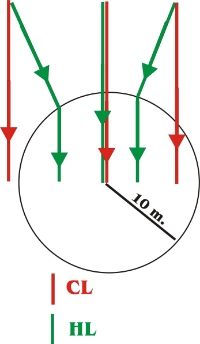tanasit said:
Interesting question indeed.
I think if you switch to HL mode when the compass fails, it will still fly back to home position (assuming its home point is properly set) regardless of its orientation but as soon as it gets to the 10 meter circle parameter (where it turns into CL mode), it will be anybody guess.
It's definitely possible to build a system that can intuit position and direction based on historical sampling, but it's very unlikely anything would be built this way. I've never flown a NAZA with a compass failure in-flight, but:
Say you're a Phantom. You're compass is busted so you have no idea what direction you're pointing, but from the GPS you know you're 20m to the NE of home point. You get put in HL mode, and the pilot pulls back on the stick. What direction do you start flying? In other words, if you don't know which way you're pointing, which motor do you engage to head northeast? You could be facing the homepoint, in which case you'd need to go forward. Or you could be facing NE, in which case you'd need to go backwards. Without a cardinal reference, you're lost.
To get it to work, you'd have to blindly engage the motors to go in one direction, then check the GPS after a few seconds to see if your position has changed outside of the 2.5m accuracy range. And if you guessed wrong, you might need to stop completely and start flying in the opposite direction. Again, it's possible to build a system that way, it just doesn't fit the operational paradigm of the Naza...just imho.








